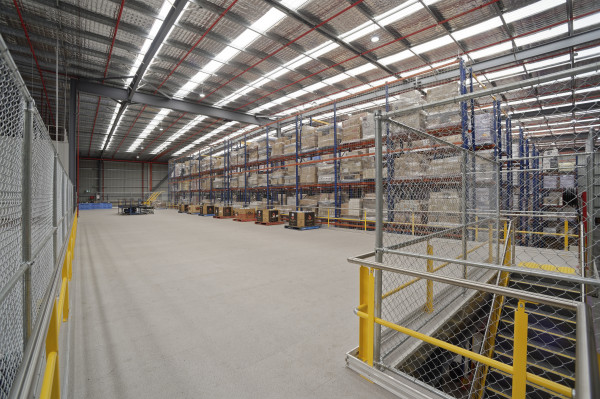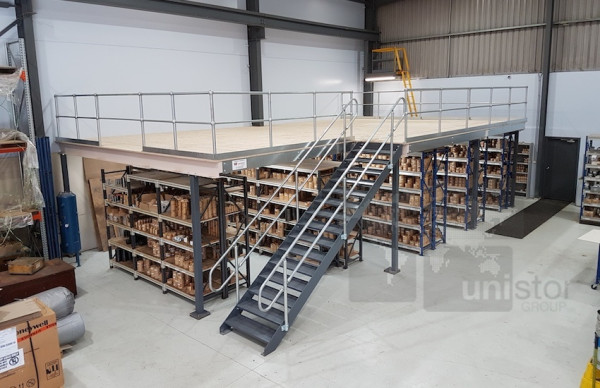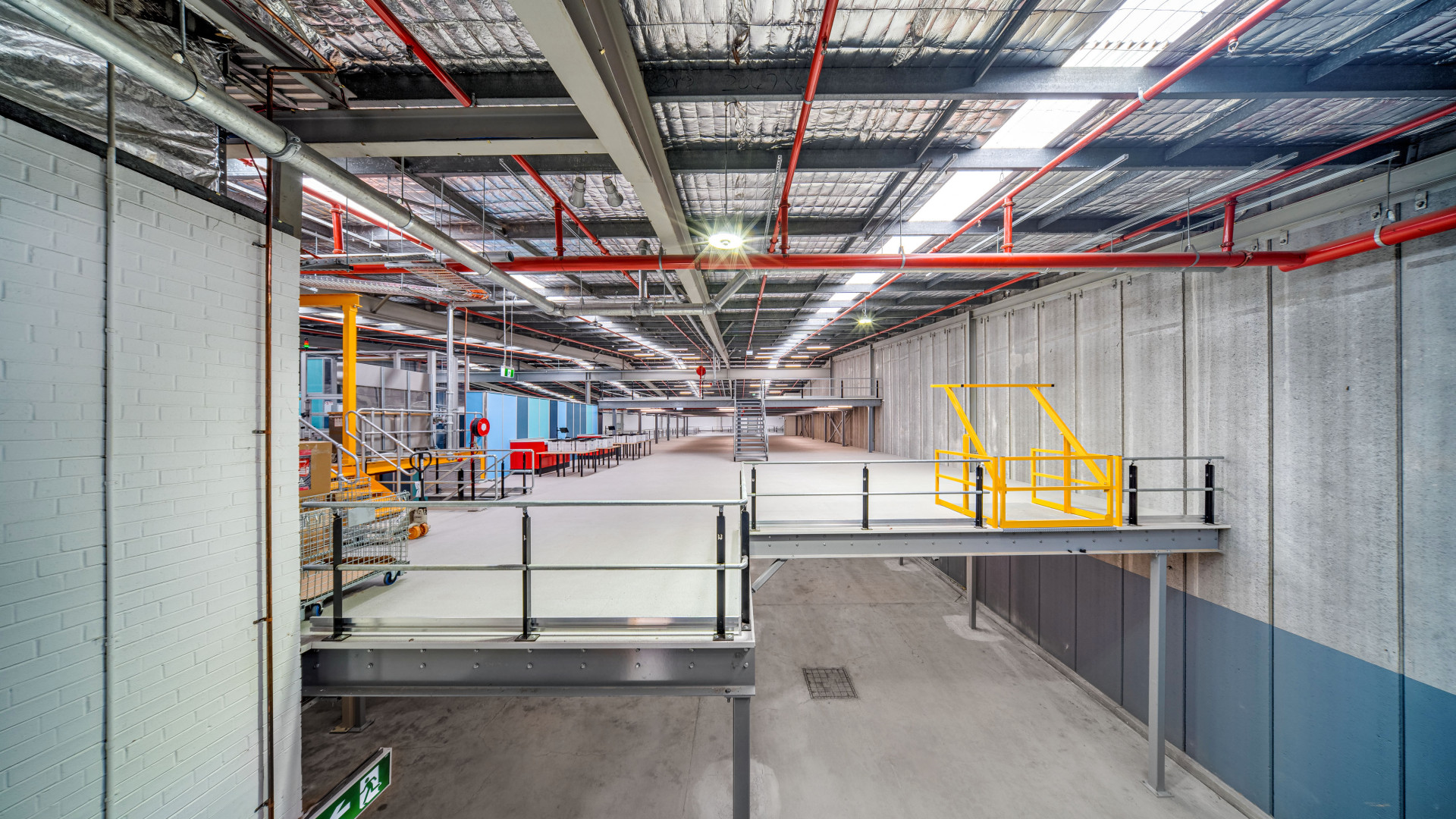Warehouse safety is undoubtedly a top priority in any industry, and a critical way of maintaining this safety is through compliant warehouse racking systems. In Australia, adhering to specific regulations and standards can help prevent accidents, improve efficiency and ensure compliance is met.
This guide will provide a thorough overview of warehouse racking regulations, discussing the standards, inspection requirements and best practices for maintaining a safe and efficient storage system in your mezzanine warehouse.

OSHA Regulations
While we are focusing on Australian standards, it is handy to compare with international practices like those under the Occupational Safety and Health Administration (OSHA) in the United States. OSHA regulations on warehouse racking enforce safety standards to ensure better workplace health and safety. Some of the key aspects include:
-
General duty clause: Employers must ensure a safe workplace, which extends to maintaining safe storage facilities.
-
Inspections and maintenance: OSHA requires regular inspections and immediate repairs or replacements of damaged racking systems.
-
Training: Proper training is mandatory for employees working with or around storage racks to ensure safe operations.
Overview of Australian Standards for Warehouse Racking
The main standard governing warehouse racking in Australia is AS 4084-2012, titled "Steel storage racking”. This standard outlines the minimum requirements for the design, installation, and maintenance of racking systems and is endorsed by Safe Work Australia and various other regulatory bodies.
Key Requirements of AS 4084-2012:
-
Design: Racking must be designed to withstand loads and usage according to its intended purpose and environmental factors, such as seismic activity.
-
Installation: Proper installation according to the manufacturer’s specifications is crucial. The standard emphasises correct alignment, anchoring and spacing of racks.
-
Load signs: Load signs are mandatory and must be clearly visible. They should detail the maximum permissible unit load and total rack load.
Understanding the Latest Australian Standards
The release of the Australian Standards 4084-2023 marks a pivotal update for the design and operation of warehouse racking systems. These standards are essential for ensuring that your racking installations and configurations meet current safety and operational requirements.
Key Updates to note:
-
AS4084.1.2023 & AS4084.2.2023: These new standards apply to all new installations and when existing racking is reconfigured or moved. It is imperative to ensure any changes comply with these updated standards to maintain safety and regulatory compliance.
-
Compliance for existing racking: If your racking was purchased in 2022 or before and complies with the 2012 standards, it does not need replacement unless it is reconfigured or shows signs of fatigue or damage
-
Compatibility with older systems: Notably, racking components from APEX Racking and Global Industrial manufactured between 2012 and 2023 are backward compatible with the new standards.
If you are unsure about your compliance status, it is always wise to consult with a professional or request a racking inspection from our expert team at Unistor.

Pallet Racking Safety: Beyond Basics
When considering the setup of your warehouse racking, it is important to tailor the design to the specific needs of the items you are storing — from size and shape to weight. This customisation extends to ensuring the racking is compatible with your material handling equipment, like forklifts, which should easily navigate aisles without risk.
Warehouse racking height restrictions
Pallet rack height restrictions are another critical aspect of warehouse safety. These restrictions are determined based on several factors, including the mezzanine warehouse layout, type of racking system, the weight and size of stored items and the height of the warehouse itself. It is vital for warehouse operators to adhere to these height limits to avoid accidents and ensure the structural integrity of their racking systems.
Warehouse stacking regulations
Warehouse stacking regulations complement pallet racking rules by addressing how goods should be stacked on racks. This includes ensuring that items are stable and securely placed to prevent collapse or spillage. Proper stacking is a must for maintaining safe operations and maximising storage capacity efficiently.
Selecting the right pallets
Choosing the correct pallet size and type is crucial for maintaining the integrity of your racking system. Be mindful that changing pallet types without consulting a structural engineer could lead to load distribution issues and potential safety hazards. If you find yourself scratching your head, Unistor provides guidance on the best pallet types for your specific racking systems, ensuring compatibility and safety throughout your operations.
Top Racking Safety Tips at a Glance:
-
Rated capacities: Never exceed the maximum unit load or total rated capacity for each bay. Each racking setup should visibly display safe working load signs to inform and remind staff of these limits.
-
Racking layout: Design your layout to facilitate not only storage efficiency but also emergency access and safe manual handling practices.
-
Modifications and maintenance: Modifications to your racking systems should only be undertaken by qualified personnel with a thorough understanding of the potential impacts on structural integrity and load-bearing capacity.
Maintenance musts:
-
Regular inspections: Inspect your racking systems regularly for signs of damage or overloading. Immediate action should be taken to rectify identified issues to prevent accidents.
-
Reporting and repairs: Establish a clear process for reporting any racking damage. Use visual aids like coloured tags to indicate urgency and ensure that damaged areas are not reloaded until repairs are made.
Partner with Unistor for Expert Warehouse Racking Guidance
Navigating the complexities of warehouse racking regulations can be a total minefield. Thankfully, Unistor—Australia's leading supplier of mezzanine solutions—is your ideal partner in setting up efficient, safe and compliant warehouse systems. Unistor offers end-to-end project services to help guide you through your warehouse design process. With over thirty years of industry experience under our belt, we specialise in creating tailored warehouse designs that make the most of your available space and accommodate all of your needs.
Our team is ready to assist with any queries about racking regulations and to help ensure your warehouse setup is optimised for both safety and functionality. Get in touch with us today to see how we can turn your warehouse challenges into opportunities for growth.



